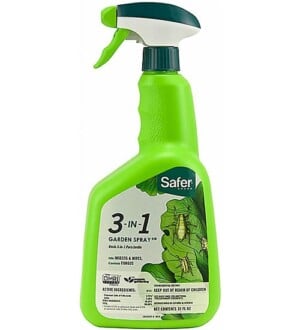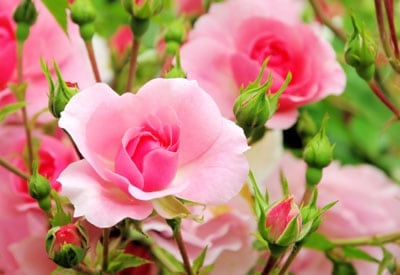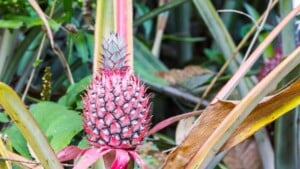April is the time in many places to get your rose bushes prepared for the growing season. The spring pruning and feeding of roses is rewarded with vigorous new growth and blossoms.
Even if you live in an area where roses are showing signs of green growth and budding — and that happened early in some parts of the country this year — it’s not too late to clean them up a bit. Giving a rose bush shape and removing second-year growth (and older if your plants have been neglected) not only help strengthen the plant but increase it’s flower power in years to come.
Start by pulling away any mulch that you have around your plants. The stuff that helped keep roots from freezing up solid will retain moisture in the spring and possibly harbor rot and disease. Give your plants a good airing. You’ll want the soil bare when it’s time to add top dressings after pruning.
Sharp pruning tools — shears and loppers — are paramount. Think loppers are overkill? Anytime you’re using shears and you have to twist the branch to cut it, you’re causing damage to the stem. Loppers give you the leverage to make clean, accurate cuts on old cane.

#1 ROSE SPRAY
3-in-1 Spray
Contains sulfur and insect killing soap derived from natural fats and plant oils.
Learn moreSafe, yet effective! Safer® 3-in-1 Garden Spray combines the power of a fungicide, an insecticide and a miticide to provide a 1-2-3 punch to knock out your garden problems. Kills pests and creates an environment where damaging fungi cannot live.
Start with obvious dead wood. Cut close — but not too close — to the ground where possible. Use loppers for thick hard canes. Twisting a stem close to the ground could damage roots.
Look for two year-old growth, obvious from where last year’s bud grew out and gave flower. First year growth produces the most flowers. Trim to encourage it.
When cutting back green canes, prune above an outward facing bud. Cut at an angle but don’t cut too close to the bud. Inward facing buds are fine if there’s room for them to grow.
The general idea is to open up the center and keep the growth pointed out. A well-pruned rose bush is a chalice, with gracefully sloping sides, empty in the middle.
Don’t be afraid to prune aggressively. Roses seem encouraged by a good trim. Keep them happy, down to four to six canes. We once trimmed back an old, sad bush to three canes and watched it take off. Remember to seal cuts with a protective paste to prevent disease and cane borer problems.
After pruning, give your roses a thorough watering ahead of fertilizing. Put down good, natural, commercial rose food, slow-release if you can find it. Or make your own. Dedicated rose gardeners often have their own special formulas that include magnesium or Epsom salts, along with alfalfa meal, bone, fish, or blood meal. Here’s some recipes and advice from the American Rose Society.

If you’ve planted new rose bushes, give them a week or two before fertilizing. Then do so with diluted fish fertilizer. Fish fertilizer is a good choice for those periodic fertilizer applications all roses like during the growing season, especially when buds are forming. Do NOT add fertilizer to roses after mid-August. It will encourage tender, new growth that is easily winter-damaged.
After fertilizing, I like to lay down a good inch of organic compost or more. It’s great for growth and it introduces the kind of beneficial microbes that help keep down disease.
For a final bit of preventive maintenance, it’s a good idea to spray your roses with an OMRI-listed anti-fungicide that will take care of black-spot, powdery mildew and other fungus that may have overwintered on your plants. Visit our page on plant diseases to learn how to identify and treat some of the more common problems.
Want comprehensive information on growing roses? Check out the different topics at our Rose Gardening Guru page, especially the page on pruning.











